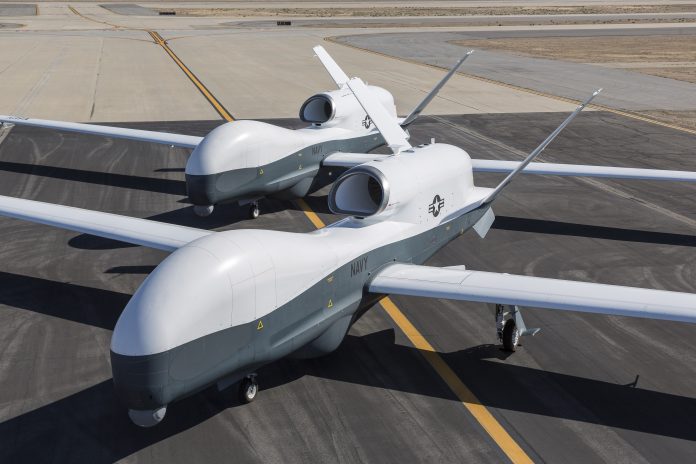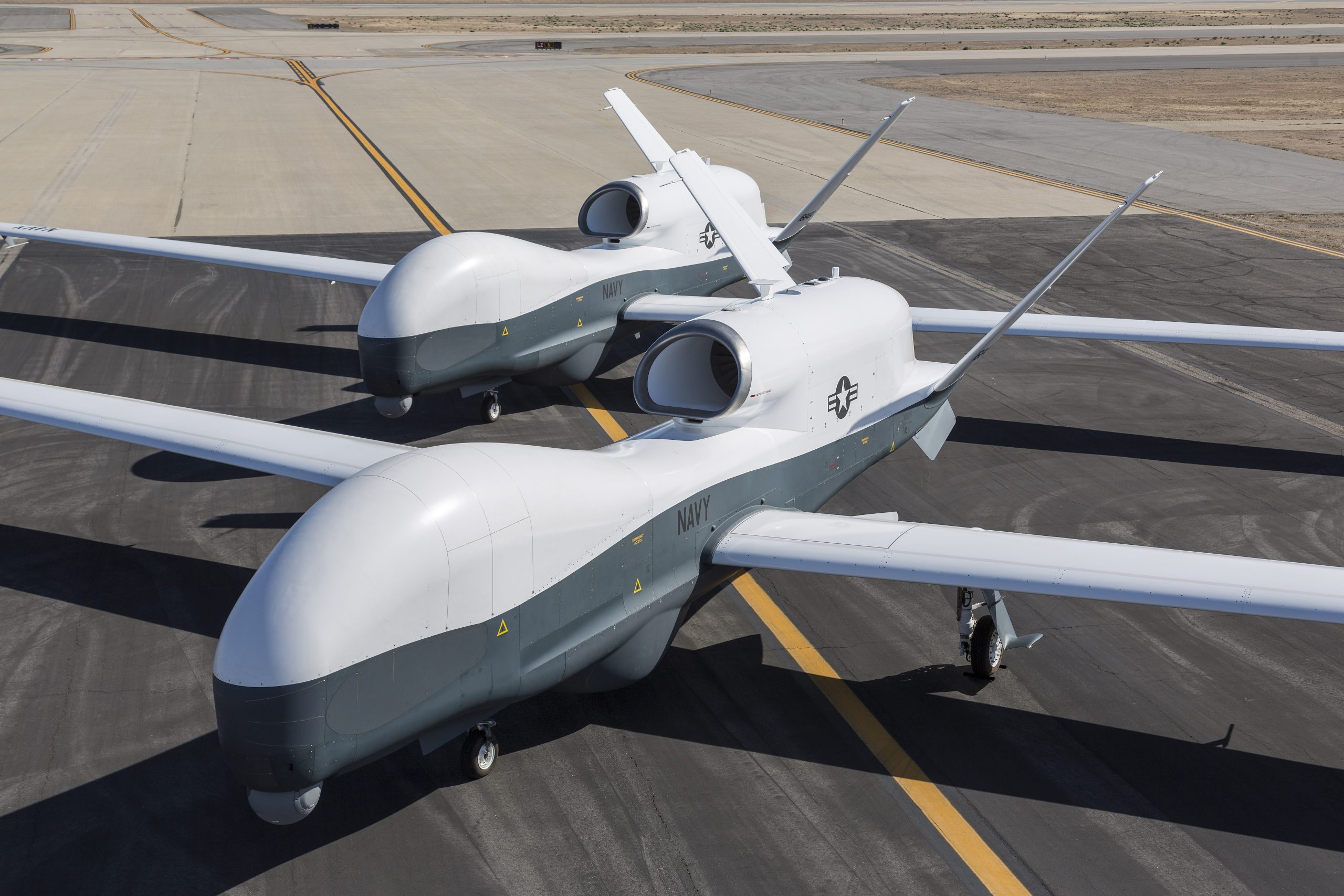
The U.S. Navy is trialing an autonomous drone capable of operating both above and below the surface, aiming to support African nations combating piracy, illicit drug trade, and other unlawful activities in the Gulf of Guinea. Introduced during the multinational exercise Obangame Express, the TRITON drone’s evaluation seeks to assess its viability for sustained use in the region, as Rear Adm.

Michael Mattis, director of Strategic Effects, U.S. Naval Forces Europe-Africa, outlined on Tuesday. This two-week exercise occurs amidst heightened U.S. attention towards West African partners, particularly in light of the recent coup in Niger, necessitating a reassessment of collaborations.
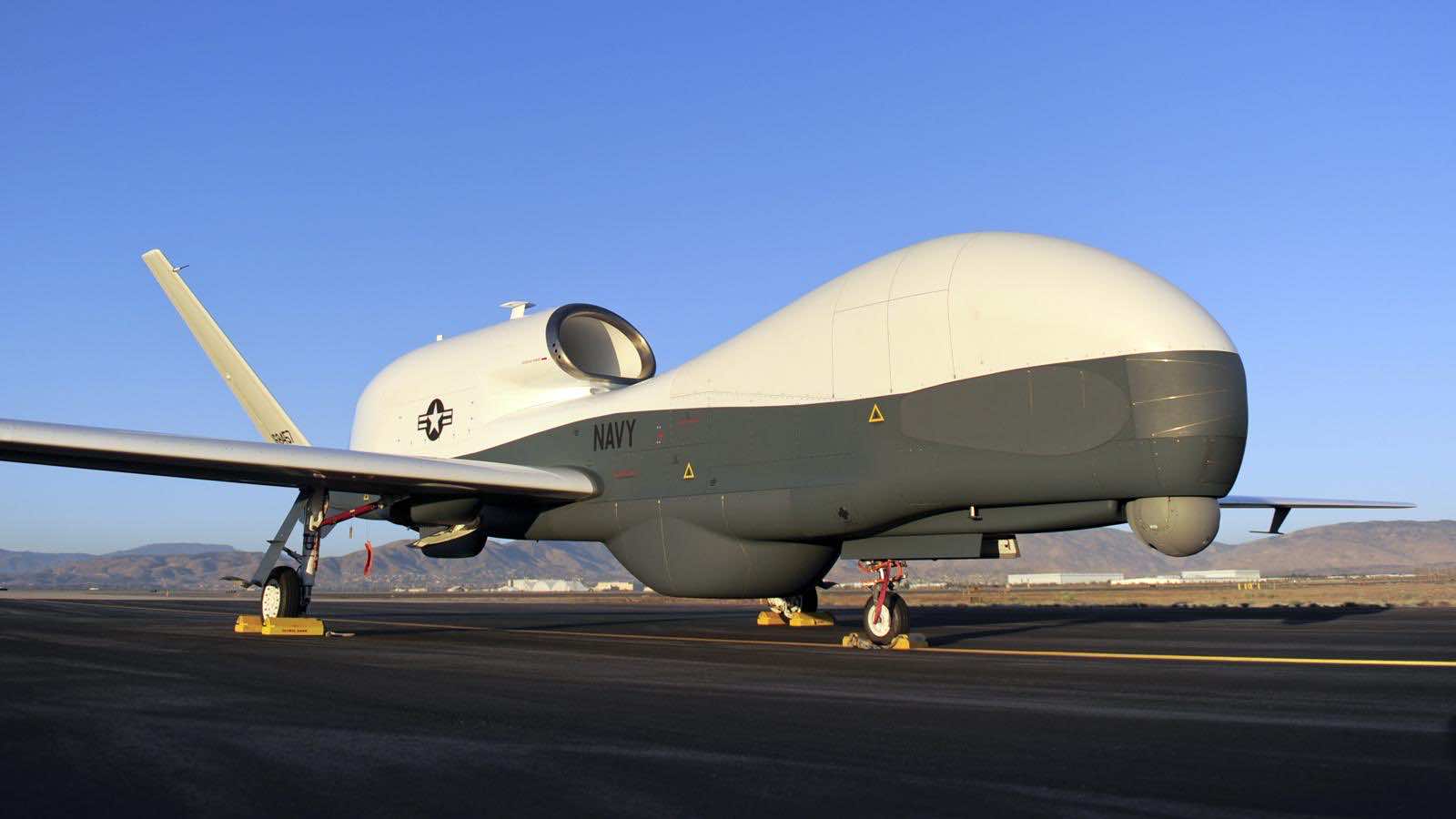
The ongoing exercise, set to conclude on May 17, encompasses launching and retrieving the drone from the expeditionary sea base USS Hershel “Woody” Williams, alongside activities such as vessel boarding, searches, and seizures, Mattis stated. These operations serve to assess the TRITON drone’s suitability for deployment in a region where the Navy faces challenges in swiftly sourcing supplies and conducting repairs.
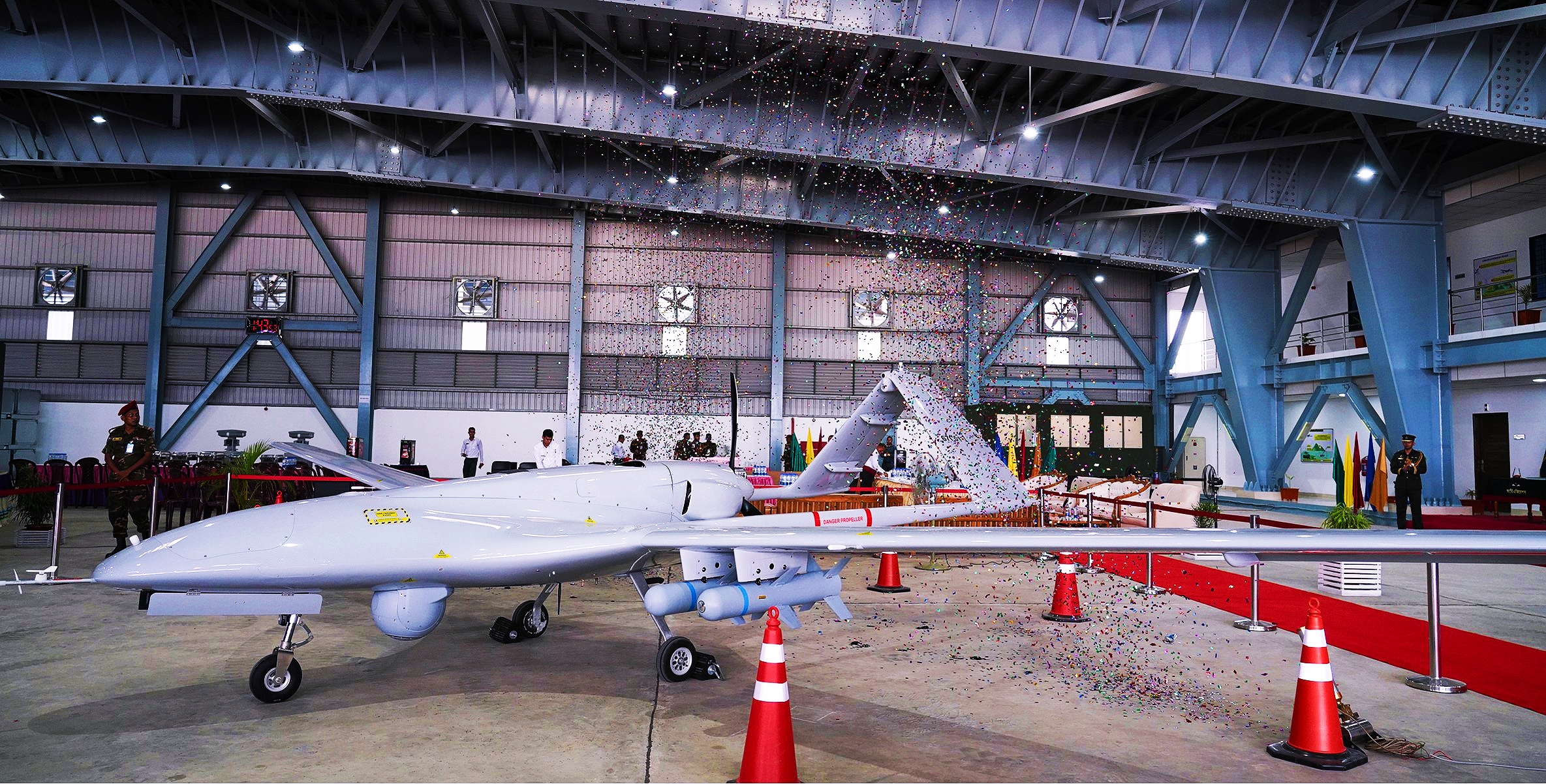
Furthermore, the testing aims to ascertain whether the drone aligns with the needs of nations like Gabon, Ghana, and Cameroon, which possess smaller navies and limited resources, Mattis elaborated.
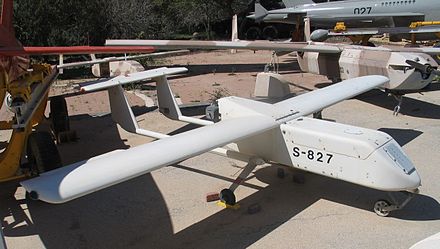
“The idea is that we have long periods of operations, (and) that we push these vehicles to their limits of endurance and sustainability, and we understand where those things are,” he emphasized.

Manufactured by Ocean Aero, based in Gulfport, Mississippi, the TRITON surface drone weighs 775 pounds and spans 14½ feet in length. It is distinct from the MQ-4C Triton aerial drone produced by Northrop Grumman.
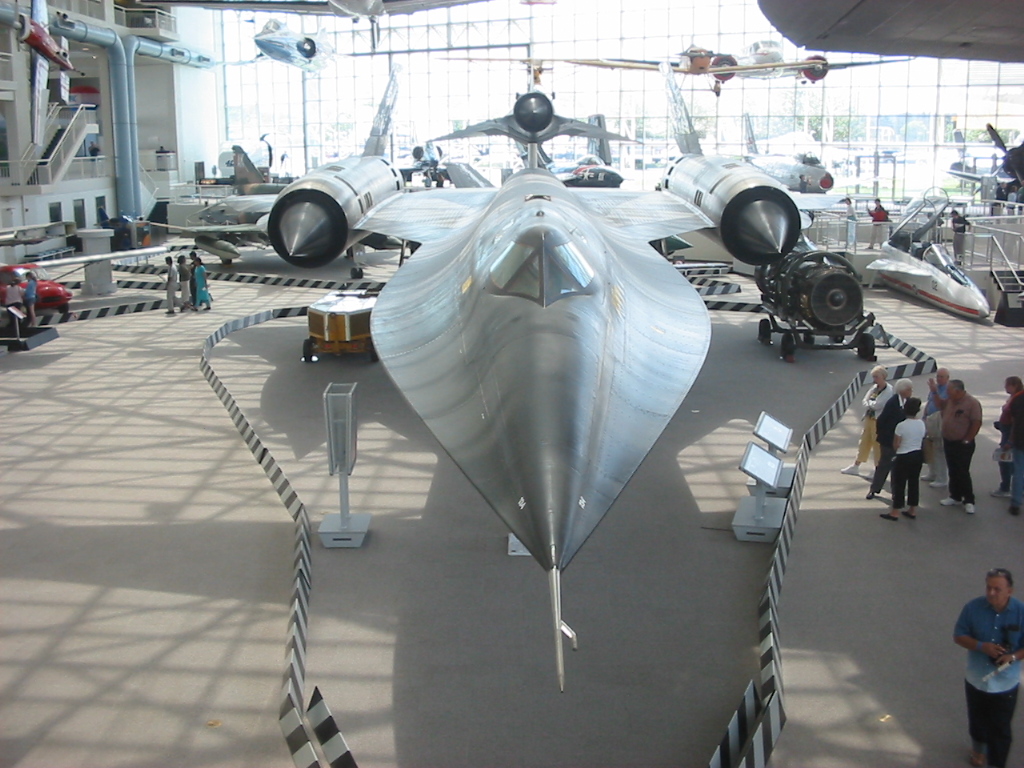
The Navy’s adoption of aerial, surface, and underwater drones is rapidly expanding, as they are deemed essential for deterrence and future conflict scenarios. Notably, the U.S. Naval Forces Central Command/U.S. 5th Fleet oversees a fleet of drones, including the TRITON, operating in the Persian Gulf region.

Recently, a MQ-4C Triton aerial drone was deployed to U.S. Naval Air Station Sigonella to collaborate with P-8 Poseidon patrol aircraft within the U.S. Naval Forces Europe area of responsibility. Drones play a crucial role in extending the Navy’s operational reach, particularly in regions with limited personnel or infrequent visits.
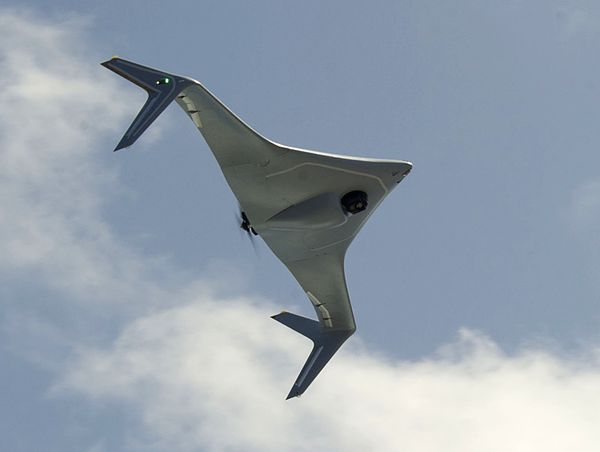
Three Aerosonde aerial drones stationed on Woody Williams serve purposes of intelligence gathering and security. These aircraft, operational on a daily basis, are also made accessible to West African nations for monitoring territorial waters, as confirmed by their manufacturer based in Providence, Rhode Island. The initial days of the Obangame exercise have already provided valuable insights into the performance of TRITON for the Navy.
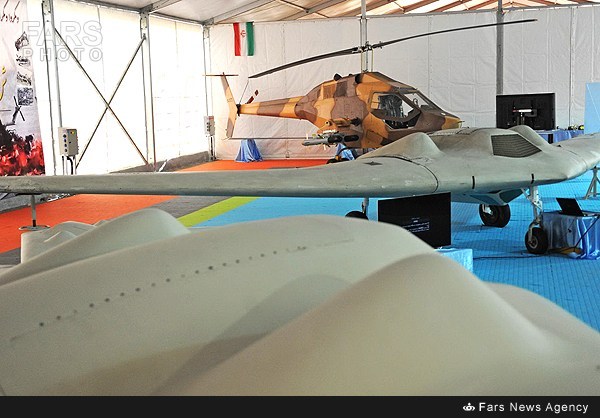
While en route to West Africa, one of the two drones in deployment encountered a minor hull crack, providing the Navy with an opportunity to witness the manufacturer promptly address and redeploy it with minimal interruption, as noted by Mattis.
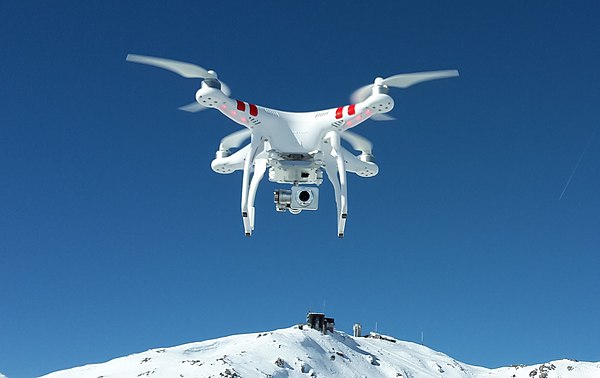
Simultaneously, preliminary testing conducted in an estuary unveiled certain limitations; the drone struggled to operate optimally due to the tidal flow, which closely matched its maximum surface speed of approximately 6 mph, resulting in accelerated battery drainage. Mattis views these challenges as invaluable learning experiences. “We’re trying to get something in the water and learn,” stated Mattis. “We want to understand where the challenges of these vessels exist so we can tailor our operations appropriately to them.”

Notably, one of TRITON’s distinctive capabilities, highlighted by Samuel Buras, a field applications engineer for Ocean Aero aboard the Woody Williams, is its capacity to submerge to evade detection or potential collisions, powered by three thrusters. Buras indicated that the drone can linger in an area for up to eight days or embark on a mission lasting up to five days, with a surface operation endurance of two weeks or more.
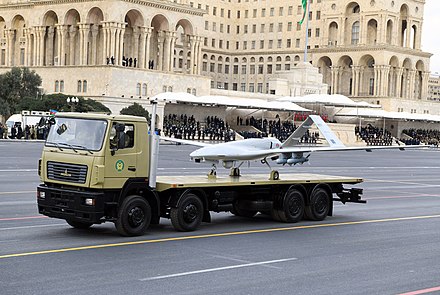
According to Ocean Aero’s website, the drone’s versatility encompasses roles in mine countermeasures, anti-submarine warfare, and subsurface seabed warfare. Following the conclusion of the Obangame exercise, the drones will remain aboard the Woody Williams, poised for participation in an upcoming U.S. Army exercise in Morocco and potentially another exercise in Portugal in the autumn, as outlined by Mattis.
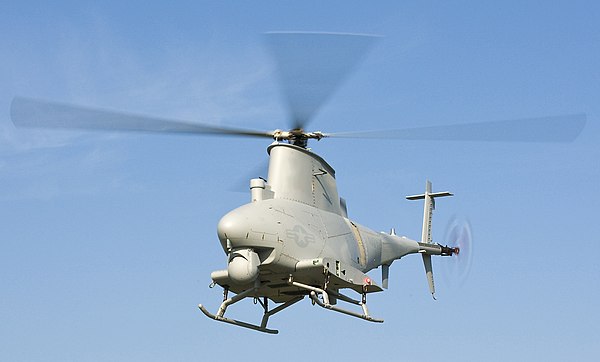
The integration of these drones reflects the Navy’s substantial investment in the Gulf of Guinea region, which includes the establishment of maritime operational centers, coastal radar systems, and the implementation of a web-based platform facilitating the sharing of unclassified information among countries.
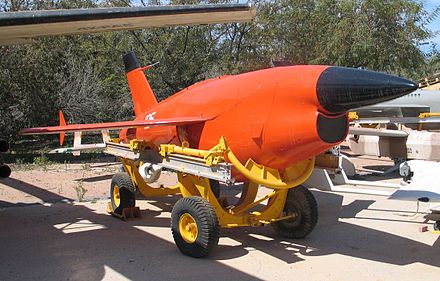
Additionally, the Navy has donated surface vessels to African nations, exemplified by the commissioning of two former U.S. Coast Guard cutters into Ghana’s navy in September. Mattis underscored the objective of equipping partner navies and nations with the necessary tools to address the challenges they confront.
Relevant articles:
– U.S. Navy tests autonomous TRITON drone in West Africa to combat piracy and illegal activities, Military Africa
– Navy tests surface drone that can dive for days at West African exercise, Stars and Stripes
– Innovative Naval Drone TRITON Demonstrates Versatility in West African Waters, DroneXL.co
– US military to boost drone fleet on Okinawa with Triton deployment, Stars and Stripes
